CANDL Creating a network of dependable lights
Team 25: Steven DeVincentis, Emily Grove, Ninar Nuemah, & Nick Mazurek
Overview
Concept
CANDL is a system of lights used for photography and videography that users can configure from a desktop application. The lights will coordinate with the application to light a scene exactly as photographers desire without the need of lighting gels or diffusers.
Motivation
One of the key components to quality photography and video is the consistency of lighting. However, it is difficult to maintain the same brightness, color, and positioning when shooting the same scene over the course of several days. Lighting gels and note taking are not precise enough to have perfect lighting every time. CANDL allows artists to control a series of lights powered by LEDs to as precise as the RGB values to guarantee consistent lighting.
Resulting Product
After a semester of hard work, Team 25 created 4 Flame Nodes that could invidividually be controlled by an Android Application on a Nexus S Phone. Each flame was able to emit
consistently bright light from 4 LED matrices without sacrificing color quality. The lights have a limitation in emitting certain colors, but the team accounted for it by limiting
the color selection to lights that are within the matrices' threshold. The product also creates a more accurate color of lighting by using a logarithmic scale and HSV values instead
of a linear scale and RGB values.
The housing for each node was constructed by Carngie Mellon's ECE machine shop with the intent of achieving an industry standard form factor while being study enough to house the
printed circuitboard and power supply. The housing fulfilled the desired requirements that photographers and videographers need from lights, which include the ability to adjust the
angle and also the ability to maintain that angle.
The aspect of the product that the team felt was something they've never done before was the implementation of the Snuffer alignment assistant. A smartphone dock was placed on top
of each Flame to allow the users to save the scene. Before tearing down a set, photographers can capture a screen shot of the scene from the perspective of a particular Flame node and
save it in the application. When photgraphers to rebuild that particular scene, she places it in the dock to re-align it. The Snuffer overlays the previous image taken over the camera output
, allowing photographers to adjust the position and angle until the two displays are completely aligned.
Future Plans
Although 18-549 has ended, there is still plenty of work to be done for CANDL. Version 2 of CANDL will give users more collective control of a scene while automating restoration. The Wick application should be updated to allow users to set multiple nodes the same colors to allow easy manipulation of highlight, accent, or flood lighting individually. The Snuffer would also be updated with image processing on the phone to provide assistance to achieve as close to similar lighting as possible. CANDL would also be re-designed with more ambient light sensors to determine what changes to color need to be made to achieve the consistent look of the scene in different ambient lighting conditions.
Competition
| Product | Price Per Node | Easy to Mount on Tripod or Camera |
Can Remotely Manipulate Light (without proprietary hardware:) |
Offers a Wide Range of Color | Assists in Maintaining Consistent Lighting |
|---|---|---|---|---|---|
| White Lights with Tinted Gels | $100 | ||||
| Selador Desire | $1780 | ||||
| Spectra IQ38 | $775 | ||||
| Phillips Colorbust Compact | $590 | ||||
| CANDL | $100 to produce |
Technical Specifications
Hardware
Each node will be running on an Atmega328P which will be used to control 4 8x8 Dot 9.6W LED Matrices based on data it will recieve via a Bluetooth module. Additional circuitry will be required to power and control the LED Matrices. The product will also use a smartphone on a dock of each node to gather and save positioning data so previous lighting conditions can be restored. We plan on building 4 nodes for our prototype.
Software
There are two major software components to CANDL. The first is a central hub that can be run on a laptop, tablet, or phone that recieves and sends data to each of the nodes. It is also the interface designed for the user to efficiently control each of the nodes to achieve desired effects and then be able to save the scene achieved. The second piece of software will run on a smartphone and allow users to align each light node to a previously saved setting via overlaying an image on live video. We plan to develop for the Android platform first and develop our software as a web application for further expandability.
Protocols
CANDL will use Bluetooth to send to and recieve data from the light nodes with the central controller. Pulse Width Modulation (PWM) will be used to control the LED Matrices and UART will be used to communicate between the micro-controller and the Bluetooth modules
Risks and Requirements
Risks & Mitigation Strategies
- The power dissipation from transistors may lead to overheating
- Use heat sinks and silent fans to dissipate heat. Add additional precaution to the housing design so that air can flow freely
- Motors aren't precise
- Allow users to be able to manually adjust the light without damaging the motor
- The LEDs are not bright enough
- Design circuit to permit more current to go through LEDs. Add more LED matrices per node.
- Latency
- Provide as much information as possible in the software and apply the final changes at once
- Quality does not match existing products
- Take test photos and apply different filters to match quality
Requirements
Progression
Documentation
Click to View
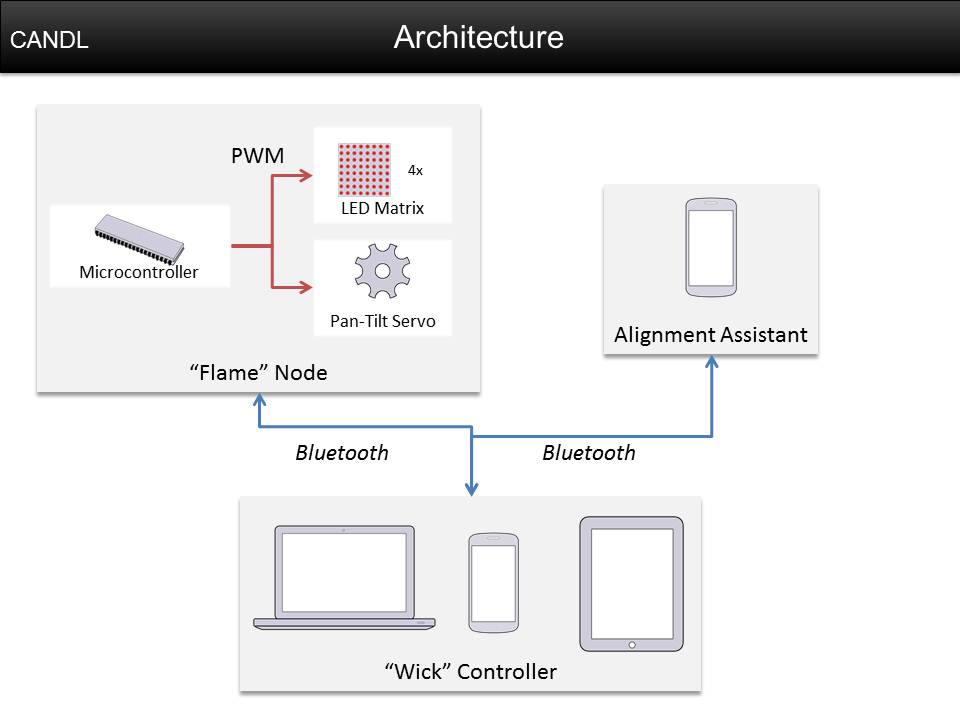
Architecture Diagram
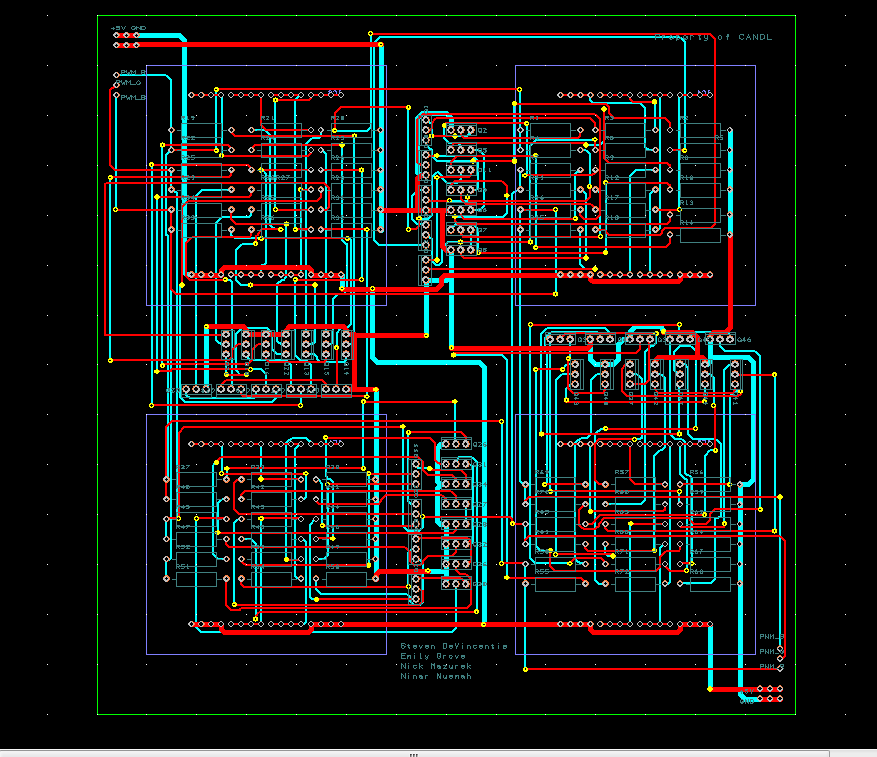
Custom PCB
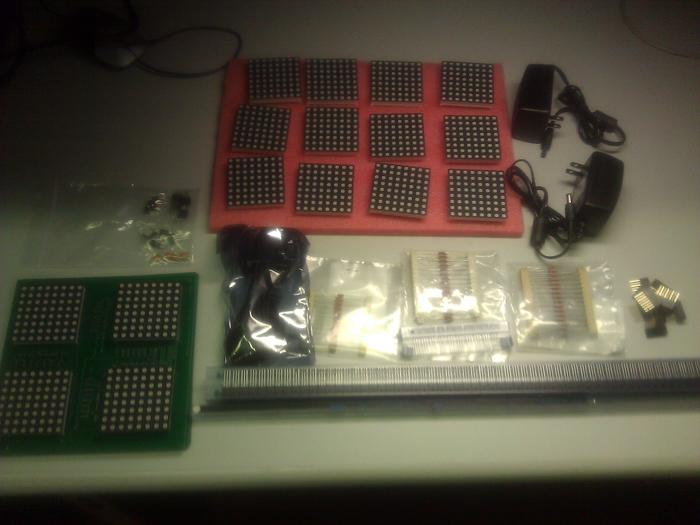
Parts for the LED Matrices
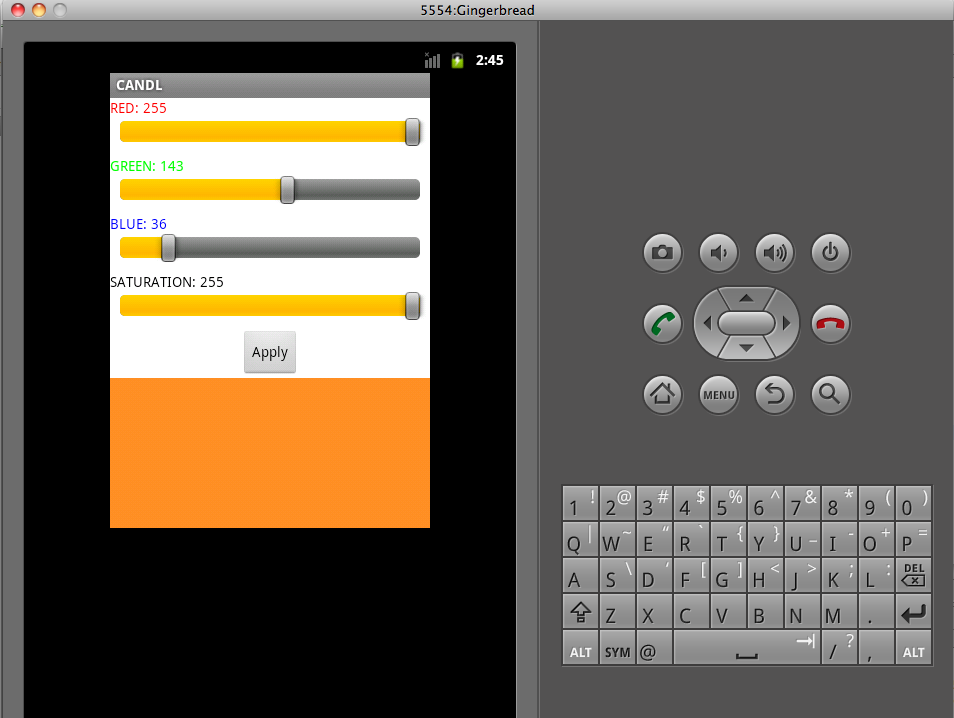
Mid-Semester Android Application
Time Lapse
Click to view
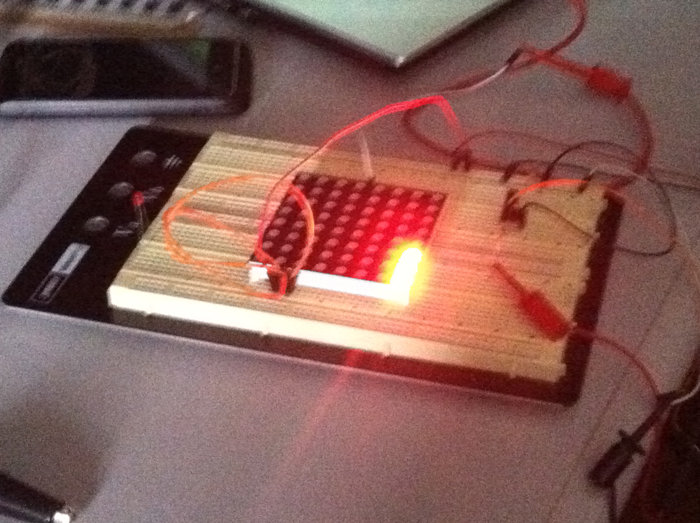
Node Production
2/4/2012
Mid Semester Demo
3/7/2012
Testing and Presenting
4/30/2012
Final Showcase
5/2/2012
Video: Meet CANDL
5/2/2012
Presentations
Special Thanks
The CANDL team would like to thank Professor Priya Narasimhan, Rajeev Sharma, and the ECE Department for giving us the opportunity to take an idea to improve the lighting industry and turn it into a full scale product.